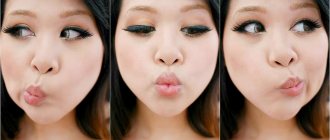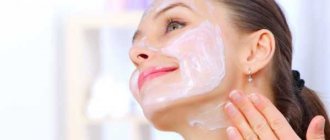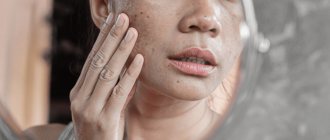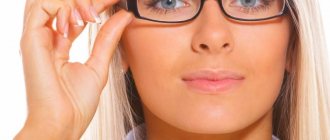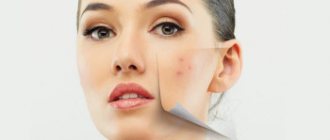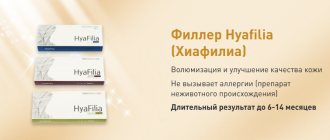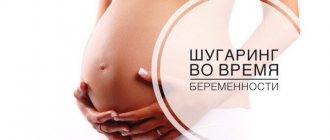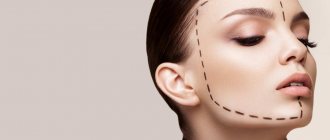Botox during breastfeeding
The period of breastfeeding can be called extremely important and responsible in the development of the baby. Therefore, doctors advise simply refusing procedures that can cause enormous damage. Cosmetologists currently use the following procedures for facial skin care:
- Masks made from natural ingredients;
- Scrub or peeling;
- Face creams;
- Laser correction.
Is beauty injection unsafe for breastfeeding mothers? In a small dose, it does not cause any serious changes at all. But the point is that it is absorbed into the woman’s blood in small doses, and from there it can pass into breast milk, even in a tiny dose. No qualified doctor can decide to inject Botox into a nursing mother. But if there are no serious contraindications to this drug in a woman, then at the OB Clinic Salon the master will decide to administer Botox to breastfeeding women.
Results of botulinum therapy procedure
Possible results
Botox treatment in Samara
Treatment of chronic headaches, tension, migraines
Treatment of chronic headaches, tension, migraines RUB 4,000. without the cost of the drug.
All prices
Treating chronic headaches is challenging. Standard methods of therapy use long-term use (3–6 months) of medications, which sometimes have frequent and severe unwanted side effects and non-drug methods that require large time and financial costs. Many patients are not satisfied with the treatment and do not want to take daily pills.
The use of botulinum therapy is a one-time procedure; repeated injections are made as needed, on average once every 6 months.
BTA treatment can also be combined with drug treatment of such frequent companions of chronic headaches as depression and anxiety, sleep disorders, autonomic disorders, etc.
Migraine is a neurological disease, the main symptoms of which are periodic attacks of severe pain in one side of the head.
Features of migraine
Pain in various types of migraine is assessed by experts as very intense, accompanied by additional negative effects, often leading to partial or complete loss of a person’s ability to work during the attack. Relieving migraine-like headaches is a serious problem for people suffering from this disease, and these constitute at least 15% of the population of our planet. In a large number of cases, specialized painkillers have a weak effect.
Elimination of chronic headaches, tension, migraines through the use of Botox
It is known that BTA not only relaxes spasmodic muscles of the head and neck, thereby relieving tension headaches. It has been proven that it directly blocks the release of substances involved in the formation of pain.
In the early 2000s, a large-scale study was conducted on the effectiveness of BTA for migraines. According to the results of this study, 72% of patients experienced a decrease in pain, and the frequency and intensity of attacks decreased. After the second injection, pain reduction rates reached more than serious 82%
Thus, since 2013, the indication “chronic migraine” for Botox treatment has been registered in Russia.
At the moment, a highly professional doctor is able, using an optimally selected dose of BTA injections, to provide significant assistance to those suffering from chronic headaches, including migraines. By performing a series of injections at certain points on the head and neck, the specialist will achieve a positive result, the effect of which will last for up to 6 months.
Advantages of using BTA injections
- One procedure helps for several months;
- If specialized drugs for migraine are taken during the period of BTA, it makes it possible to reduce their dosage. This feature is especially important if the patient is in the early stages of pregnancy;
- BTA does not have systemic side effects, since it does not enter the bloodstream;
- BTA injections in the head and neck area provide an additional cosmetic effect.
In the fight against chronic headaches, including migraines, the use of botulinum toxin allows one to reach an innovative level of influence, while providing the most gentle overall effect on the body.
BTA treatment will not only relieve you of headaches, but will also remove facial wrinkles on your forehead!
Injections of the drug with a thin syringe are usually made into the muscles of the proud, frontal, frowning brows, temporal and occipital muscles at several points in each of them. The injections are painless. The choice of target muscles and the dose of the drug depend on the patient’s complaints and the presence of muscle tension in the pain area. The average dose of the drug per procedure is 100 units.
Botulinum therapy. Questions and answers
Question: I read somewhere that Botox is used to treat depression. This is true? Answer: Botulinum toxin is not used to treat depression as such, but to treat depressive facial expressions. That is, we relax the depressor muscles, which are responsible for the expression of grief, despondency, sadness, anger, irritation, and the levator muscles begin to work more. Accordingly, positive facial expressions improve, and along with it, mood.
Question: I heard that in the past (Soviet times) conscripts were given Botox vaccinations so that they would supposedly not be poisoned by expired canned food. In my opinion, this is complete nonsense! What do you think? Answer: In Soviet times, conscripts were vaccinated against tetanus and antigens were produced in the blood that are cross-linked with botulinum toxin, so we can say that this is also a prevention of botulism. Such vaccinations are also given to children. This is AKDS or ADS-M. Currently, I don’t know whether military personnel receive this vaccination. But immunity is unstable and after a few years botulinum toxin begins to act again.
Question: What is the difference between all the drugs - Botox, Dysport, Xeomin? Does Botox sometimes not work? Answer: Botox and Dysport are drugs of botulinum toxin type A. These drugs were created by different manufacturers and tested differently. Therefore, they have different dosages, but with an adequate dose, the same effect can be achieved. Many people talk about different molecular weights and different diffusion of drugs. But these are misconceptions! Now this version is being refuted at all congresses (perhaps it is worth saying that Dysport is the drug of choice for the treatment of hyperhidrosis). Xeomin is a type A botulinum toxin preparation purified from complexing proteins. Therefore, this is the drug of choice for allergy sufferers, but in both Dysport and Botox the amount of complexing protein is minimal and allergic reactions are practically not observed.
Question: I have this question: if everything is fine with the face, but the neck doesn’t look very good. Can these wrinkles be removed with Botox? Answer: Yes, you can also work with the neck with botulinum toxin if the patient is bothered by the so-called “cords” on the neck with a thin, long, swan-like neck. If at the same time we also see loose skin, then we should use biorevitalization, mesothreads, and fillers.
Question: Do I need to take tests before the procedure, and what kind? Are there any contraindications at all? Answer: There is no need to take any special tests. A thorough history taking and examination of the patient is required. Contraindications: - Diseases associated with impaired neuromuscular transmission, often autoimmune diseases; - Infection at the injection site; — Generalized movement disorders; — Pregnancy, breastfeeding; — Blood clotting disorders; — Prodrome and acute infectious diseases.
Question: How long does it take for Botox to wear off on the neck area? Or is it better to do mesotherapy there? Answer: Mesotherapy and botulinum therapy are two different procedures that solve different problems. Mesotherapy and, in particular, biorevitalization are prescribed for flabby, thin, dehydrated skin. We look specifically at the condition of the skin, and botulinum therapy is prescribed for pronounced platysma bands, i.e. with a tense, “muscular” neck, this way we work the muscles. These procedures do not replace each other, but often complement. Courses of mesotherapy and biorevitalization should be prescribed once every six months. Botulinum therapy is carried out no more often than once every 5 months. The effect after the administration of botulinum toxin preparations (Dysport, Botox, Xeomin) in the neck area is observed for 3 to 5 months.
Question: Is it possible to inject Botox into the lateral bridges of the nose; when you smile, it wrinkles very unsightly. I asked this question to two cosmetologists - one said that it’s impossible, and the second said that you can put one and a half units there. Answer: Absolutely right. It is possible and sometimes necessary to pierce the transverse part of the nasal muscle, precisely the one that forms the so-called “rabbit” wrinkles. Usually 4 units of Dysport and 1.5 units of Botox on each side.
Question: I have an appointment for Botox on February 24th. What skin care procedures can be done after the procedure (biorevitalization, mesotherapy, cleansing, peeling) and after what time. Answer: All of the above procedures can be done 7-10 days after botulinum toxin injections. Fillers in the same area in two weeks. To another zone - you can use the same procedure.
During pregnancy
No special studies have been conducted on pregnancy and hair Botox. Not a single scientist in the world would risk the health of a little person. The consequences of such experiences can be the most dire - early birth or pathological changes in the fetus.
A large number of mothers around the world are faced with the question of whether to seek help from Botox or not. Why expectant mothers often think about using the procedure:
- fragility;
- dryness;
- dropping out;
- weak regrowth process.
Hair problems begin to increase during pregnancy and continue after it, when you have to independently feed the baby with breast milk. The body loses its former strength. When a child lives inside, he receives everything from his mother - vitamins, micro and macroelements. With pregnancy, a woman's hormonal levels change.
Due to this series of events, many cosmetic services become harmful for adults and children. Typically, allergies and toxins are the key negative factors.
A woman in this position must determine for herself what is more important - her life and child, or beauty. Risks in an “interesting” situation always exist, and only the mother bears responsibility for them.
Advice. If there is a great need to use Botox for hair, then it is better to carry out the entire process before conceiving children.
1st trimester
This period is characterized by the formation of the child’s internal organs. In order not to negatively influence the ongoing processes, a woman is recommended to exclude cosmetic care - with hair and the whole body.
It is advisable not to use new products (care creams, decorative cosmetics) that have not been used before.
One of the most important problems in the first months of pregnancy is toxicosis. A pregnant woman experiences terrible discomfort; there is no need to further irritate the body with pungent chemical odors. They can negatively affect her condition and serve as an irritant.
We recommend reading: polishing and pregnancy, is the procedure harmful?
2nd trimester
The period under consideration is safer for the fetus. Risks are significantly reduced, important organs are formed.
This time is also not recommended for using Botox for hair. There is another risk of the result not being consolidated or the effect being short-term. The body in this situation does not receive enough vitamins, which affects the period of action of the product. Mom’s hormones behave differently, and no master can give any guarantee of results.
3rd trimester
At the stage of the third trimester, the development of the fetus goes through the final stage of development - the baby eats, grows and prepares for birth. According to medical indications, there should no longer be a significant threat to the child.
Problems may arise due to allergies. If you do not take precautions in the last stages of pregnancy and use the hair restoration service with Botox, there is a risk of premature birth. A possible situation sometimes turns into sad consequences.
We recommend reading: can pregnant women do lamination?
Doctors' recommendations
Every pregnancy is different. At the slightest risk of complications, no doctor will advise agreeing to the use of Botox. The appearance of signs of hair loss and dullness indicates disruptions at the hormonal level.
In such situations, you need to rush to the gynecologist, undergo a series of tests and take the prescribed course of medications. This method is most beneficial for the mother, since Botox will only create a temporary effect.
There are several ways to prevent painful hair:
- non-aggressive scratching. You will find criteria for choosing a comb for hair growth and strengthening on our website;
- a minimum of elastic bands and hairpins;
- natural drying, without the use of special devices;
- applying natural masks and balms created at home;
- washing your hair using herbal decoctions and infusions.
Before using cosmetic procedures, the expectant mother should always consult with her doctor. Taking risks with your child is no joke. Proper weighing of human values will save everyone from problems.
We have prepared for you a selection of the best folk remedies for hair growth and strengthening:
- recipes with salt against hair loss;
- apple masks for rapid growth;
- recipes for tinctures, decoctions and masks based on herbs;
- curd masks for comprehensive hair care;
- composition and effect of masks with fish oil;
- kefir masks for healing and hair growth.
How does the substance affect the health of a breastfeeding woman?
During lactation, not only the young mother’s body itself changes, but also her hormonal levels. Since, in addition to vital hormones, those needed for milk production are also released. A special change in the natural process of breastfeeding can upset this balance. Especially if you inject such a dangerous substance as botulinum toxin. After all, when breastfeeding, the body reacts to any substances in a different way, not in the same way as before pregnancy.
Botox during breastfeeding often leads to complications such as:
- asymmetry of facial muscles;
- swelling, which often bothers nursing women;
- drooping of the eyelid if the drug is injected into the eye area.
It is difficult to predict how a nursing mother’s body will react to the introduction of serum, so doctors recommend carrying out such procedures only after breastfeeding has ended.
Botox injections are not a harmless procedure and are not recommended for breastfeeding.
Something new about Botox
Let's start with the theory: there are several botulinum toxin type A drugs used for therapy. They have different names (for example, “Dysport”, “Lantox”, “Xeomin”), the dosage and distribution in tissues are slightly different. But the mechanism of action is the same: these drugs block the transmission of nerve impulses to the muscle, eliminating hyperactive facial expressions and smoothing out wrinkles. And yes, Botox is not a filler; it is not injected into the lips or cheekbones.
In “big medicine”, botulinum therapy has been used since the mid-twentieth century, in doses many times higher than in cosmetology. It is used to treat strabismus, torticollis, muscle hypertonicity, increased sweating, and migraine. It is included in recovery protocols after stroke and facial nerve paresis. In short, the procedure has been well studied for a long time.
It is generally accepted that Botox injections turn the face into a static mask. Yes, in 2002, when these injections first appeared in the arsenal of cosmetologists, this was the case (remember Nicole Kidman’s poker face). But over the past 15 years, the protocol for the procedure has changed greatly, and today the patient’s immobilized face is a sign of a medical error. Now doctors all over the world are focusing on the Mild Mimic Control technique, which only slightly limits hyperactive facial expressions, keeping the face mobile. Which, however, does not prevent facial wrinkles from smoothing out.
In addition, the dosage of the drug has become much smaller, and the duration of the procedure has become shorter. If earlier botulinum toxin acted for about six months, today it lasts 3-4 months. It is because of this that the myth called “addiction” arose. Believing that the skin can get used to Botox, many patients are afraid that sooner or later the drug will stop working on them. In fact, there are very few people who are resistant to Botox - on average 1 patient in 10,000.
Of course, theoretically, addiction is not excluded. The drug is a complex protein complex to which the body can easily produce antibodies. There are studies that indicate the likelihood of such a scenario if the interval between procedures is violated. For example, constantly “finish off” large doses of Botox more than once every 3 months. But that’s why the protocol exists, to be followed. And if the doctor offers you more than two botulinum therapy sessions in a row, it’s time to be wary.
If you believe that in cosmetology Botox is used only for the correction of wrinkles, you are only partly right. The truth is that there are almost no areas left on the face where injections cannot be given, depending on the purpose, choosing the dosage, degree of dilution and depth of injection.
With botulinum toxin you can:
- do non-surgical eyebrow lifting;
- raise the tip of the nose or corners of the mouth;
- “unfold” the lips, making them visually plumper;
- fight protruding ears;
- remove “cords” from the neck;
- tighten the middle third of the face;
- correct malocclusions and bruxism (involuntary grinding of teeth);
- stop age-related ptosis, preventing tissues from sagging and the nose and corners of the mouth from drooping.
By the way, the last point does not mean that you have to wait until you are old enough to make an appointment at the clinic for Botox injections. After all, botulinum therapy is, in a sense, a procedure for young people. And if there are indications, it can be carried out starting from the age of 18: for example, if at this age the patient has hyperactive facial expressions, then by the age of 25 visible wrinkles will appear. Preventing them from forming is easier than fighting them later.
In addition, botulinum therapy does not make sense if age-related changes have already led to severe ptosis or, scientifically speaking, soft tissue dysplasia. With severe sagging tissue, the ligaments are stretched, the connection between muscles, fat packets and skin weakens - and the introduction of neurotoxin into the muscles is no longer able to smooth out wrinkles. Layer-by-layer tissue restoration will be required: work with the ligamentous apparatus, SMAS lifting, deep filler injections.
Another common horror story is that Botox causes muscle atrophy. Doesn't call. Muscles cannot atrophy on their own or under the influence of any drug: this only occurs against the background of a lack of hormones. Therefore, a few years after the onset of menopause or andropause, if you have not been prescribed corrective therapy, 25% of the muscles will experience atrophy.
As for botulinum therapy, the muscles cannot even lose tone from it, since the drug only fights muscle hypertonicity and returns it to normal: the dosage is simply not enough for anything else. Science has not described a single case of long-term muscle paresis after botulinum toxin injection. And all short-term side effects like “fallen forehead” are nothing more than errors in drug administration.
By the way, regarding administration errors: there is a popular, although unknown where, belief that the situation will be corrected by taking an antibiotic. This is one of the most dangerous misconceptions. Modern antibiotics not only do not weaken the effect of botulinum toxin, but, on the contrary, can significantly enhance it, as they further reduce the neuromuscular connection. Not to mention the fact that it is generally forbidden to take antibiotics without a doctor’s prescription. There is also no point in going to the sauna after an unsuccessful procedure: it will not reduce the effect.
I’ll say more: there are no complete antidotes for botulinum toxin. Some drugs can slightly weaken the effect, but, fortunately, you cannot even buy them yourself, without a doctor’s prescription. Two things can really weaken the effect of an unsuccessful procedure: microcurrent therapy and mesotherapy with the drug DMAE, which improves metabolic processes. Just don’t rely on them completely: it’s much easier to insure yourself against an unsuccessful procedure than to correct the doctor’s mistakes later.
How does the drug affect the child?
There is no data on scientific research on the effect of the drug on infants, so it is impossible to say whether the drug is safe for newborns. Most often, doctors rely on studies on the effects of botulinum toxin conducted with mice. The following reactions were observed in newborns during natural feeding:
- allergy;
- opposite states of apathy or excessive excitability;
- fever;
- developmental problems and weight loss;
- malfunction of the digestive system;
- pathologies in the central nervous system and cardiovascular system.
Moreover, any complications in newborns can pass without obvious symptoms.
The effect of Botox injections on the baby’s body has not been studied, so this procedure should be postponed until after the end of the guard.

